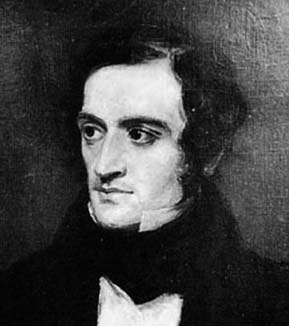Robert Murphy (mathematician) facts for kids
Quick facts for kids
Robert Murphy
|
|
|---|---|
 |
|
| Born | 1806 Mallow, County Cork, Ireland
|
| Died | 12th of March 1843 (aged 36) London, England
|
| Alma mater | Caius College |
| Known for | Algebraic Equations Integral Equations Operational calculus |
| Scientific career | |
| Influences | George Green |
| Influenced | Augustus De Morgan George Stokes |
Robert Murphy (born 1806, died 1843) was a very smart Irish mathematician and physicist. He made important discoveries in algebra, a type of math that uses letters and symbols. He was also a Fellow of the Royal Society, which is a big honor for scientists.
Contents
Robert's Early Life and School
Robert Murphy was born in 1806 in Mallow, County Cork, Ireland. His father was a shoemaker. When Robert was 11, he had a bad accident. A cart ran over him, breaking his leg. He had to stay in bed for a whole year. During this time, he read books by Euclid and learned a lot about algebra.
Robert started solving tough math problems in a local newspaper. His amazing solutions caught the eye of a math tutor in Cork. People helped raise money so Robert could go to Mr. Hopley's school in Mallow. Later, in 1823, he tried to get into Trinity College, Dublin, but it didn't work out.
With help from a professor named Robert Woodhouse, Robert went to Cambridge. He had written a clever paper about a famous math problem called the "duplication of the cube." Because of his talent, he was accepted into Gonville and Caius College, Cambridge, in 1825.
Robert was a brilliant student. He won the top math prize in 1826. In 1829, he graduated with a first-class degree. He was the 3rd "wrangler," which means he was one of the best math students in his year. This earned him a special scholarship called a Perse Fellowship. He also worked as a librarian to help pay for his studies.
Robert's Later Years
After college, Robert taught Hebrew and Greek lectures. He also helped with student rules and chapel services at his college. However, he never became a senior professor at Caius.
Later, Robert moved to London. Even though things were tough for him, he kept working on math. He wrote an important paper about a new type of algebra. In 1838, he was chosen for another special scholarship by Caius College. He also became an examiner for math and science at the University of London.
How Robert Murphy Died
Sadly, in 1843, Robert got a serious lung illness called tuberculosis. He died soon after, on March 12, 1843, when he was only 36 years old. Robert was buried in Kensal Green Cemetery in London. His grave does not have a headstone or any markings.
Robert's Books and Papers
In 1830, Robert was asked to write a book about electricity for students. His book, Elementary Principles of Electricity, Heat, and Molecular Actions, part i. On Electricity, came out in 1833. He also wrote Theory of Algebraical Equations in 1839.
Important Papers and Articles
One of Robert's first important works was a paper he wrote in 1824. It was called Refutation of a Pamphlet Written by the Rev. John Mackey... This paper helped start his career. He also wrote another notable paper that was the first to mention the work of George Green. Robert understood how important Green's ideas were.
Robert wrote many other math papers. These were published in well-known science magazines like the Cambridge Philosophical Transactions and the Philosophical Magazine. A famous mathematician named Augustus De Morgan encouraged Robert to write articles for the Penny Cyclopaedia, which was like an encyclopedia for everyone.
His last works included papers on "Primitive Radices" (1841) and "Atmospheric Refraction" (1842). De Morgan said that Robert had a "true genius for mathematical invention."

